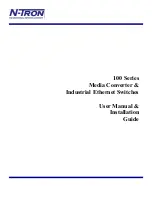
Models 707B and 708B 199BSwitching Matrix User's Manual
Section 5: Working with the Series 2600A
707B-900-01 Rev. B / June 2013
5-17
Program code to run the test
The example program code stores the program in the instrument for later use. To run the program,
send the following commands to the Model 707B or 708B.
Example program code to run the test
Code
Notes and comments
diodeTest()
runDiodeTest()
Run the script to define the functions.
Execute the test by calling the function that configures the instruments
and sequences their actions.
To retrieve data from the System SourceMeter instrument through TSP-Link, use the
printbuffer()
command to print the data to the computer communication interface. An example is
shown below.
Example: Retrieve buffer data
Code
Notes and comments
printbuffer(1, node[2].smua.nvbuffer1.n,
node[2].smua.nvbuffer1.readings)
Print all readings from the SMU data buffer. Note that
"readings" is a buffer attribute.
Using background scans for longer scan lists
Example 4 illustrates use of the scanning and triggering model to create a foreground scan.
While running a foreground scan, you must wait for the scan to complete or you must abort the scan
before you can query the instrument state or any reading buffers. For a scan with a few channels or
crosspoints in the scan list, this might not be a problem. However, when there are many channels in
the scan list, or when scans are run over long time periods, it can be useful to determine instrument
state. In these situations, you can run a background scan. A background scan allows you to query
settings during a scan.
To change Example 4 from a foreground scan to a background scan, you need to change one
command in the "runDiodeTest" function. Change
scan.execute()
to
scan.background()
. You
can then use the
scan.state()
command to query the status of the scan, including the number of
steps in the scan, the number of steps performed, and the number of entire scans performed.
















































